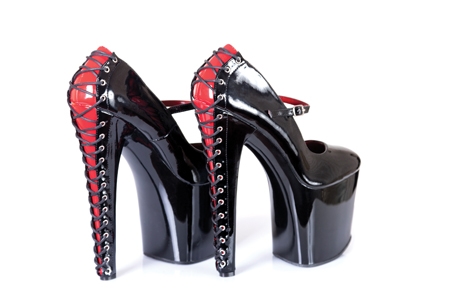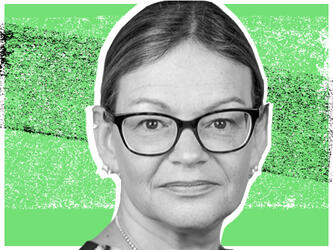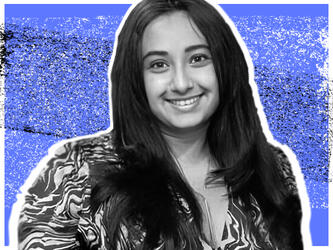Walk on the wild side

Hackers, dominatrices, superhero wannabes. Girdle makers. Not your usual focus group fare. They might find themselves taking part in research from time to time – but they will more often than not keep the more extreme side of their personalities under wraps. Brands, though, are increasingly keen to peer behind the facade of normality to the unconventional person underneath.
Sense Worldwide is carving out a niche for itself in this area, helping marketers find “extreme users” they can work with to come up with new products or communications ideas that could achieve wide commercial breakthrough.
Brian Millar, strategy director at Sense Worldwide, says: “Traditional market research talks to average users, people who fall at the middle of the bell curve of each user profile. The trouble is, they’re just a bit too average. They tend to identify the obvious and run with it. If you’re a large corporate conducting a lot of research, you’ve probably heard the big universal truths about your category. It’s puzzling how much money is spent on hearing the same news, year after year.
“Average consumers are great at helping you to validate incremental changes to products,” says Millar. “But, if you’re looking for the next big thing, you’re not going to find it with the people who are broadly happy with your product. You have to tap into the creativity of the fringes.”
To the extreme
There’s a staggering mix of sub-cultures at the fringes of the consumer world. Obsessive compulsives, teddy-bear enthusiasts, prescription-drug addicts or computer hackers are just some of the people Millar and colleagues find themselves talking to in the hunt for new creative ideas.
“These consumers brought us lots of energy and openness. They were willing to hear what we had to say but weren’t shy at putting together some concepts that we could actually work with”
Jason Fulton, Nike
“Extreme user research is about inspiration,” he says. “If you’re looking to inspire new ideas, you have to look to inspiring, creative people, the kind of people who will adopt something that average people reject. Most people don’t like new things: we’re programmed by evolution to distrust novelty. However, there are always smaller groups of people who are actually in the process of creating novelty themselves.
“People who have this kind of mindset are much more open to new propositions,” says Millar, “so they’re great to work with to co-create breakthrough communications. New thinking isn’t going to come from the same old insight from the same old consumers.”
In its work for a large US health insurance company, Sense talked to consumers who rejected the mainstream medical system, instead ordering prescription drugs over the internet or flying to Singapore or India for operations.
The company also used extreme athletes when working with Nike to launch a new range of products in the run up to the Beijing Olympic Games in 2008.
Jason Fulton, consumer cultures manager at Nike EMEA, explains: “We needed to create a new collection in time for the start of the Games and needed to generate some good concepts to enable us to launch in time. We did the usual research methodologies but we wanted to work with new creative, experimental and challenging consumers for a long time to help us to make sure that the products were going somewhere new in their direction for the relaunch, marking the stake in the ground.
“These cultural experts and consumers were bringing us lots of energy and openness. They were willing to hear what we had to say but weren’t shy at putting together some proposals and concepts that we could actually work with. They brought a really good energy and creativity through so many ideas – product ideas, marketing strategies and retail strategies, which we implemented – but also new ways of working. It’s a very immersive, collaborative, energetic way of doing things – and it could be done more frequently if only time and budgets allowed.”
A leap of imagination
Aeron chairs, nacho chips and personal computers – they all died in conventional research, says Millar, underscoring the point that ‘average’ consumers will often reject new, radical and unfamiliar concepts. Yet ground-breaking ideas are needed for brands to make their mark. “What we’re finding more and more is that in many sectors the pace of innovation is rising to levels previously only experienced in technology and fashion,” says Millar.

“We’ve used extreme user research on everything from sports apparel to TV shows. We’ve had obsessive-compulsive people designing toilet brushes and teddy bear collectors co-creating the ‘future of cute’.
“Every product and service has its extreme user. You just have to look hard enough. Blister plasters have devotees among soldiers and shoe fetishists. Hair removal cream is a big topic among Brazilian transsexuals. We’ve recently been calling yacht clubs in Albania asking them to put ads on noticeboards to get hold of high net worth individuals.”
The idea of extreme user research is that for every new idea uncovered in the process, the research helps the brand develop its relationship with this niche group of consumers. “Done in the right way,” Millar says, “it can enhance a brand’s standing in small but influential creative communities. Certainly brands like Nike have a long history of supporting extreme athletes, and have benefited immensely from their advocacy.”
However, Millar warns, these “lead users” can be prickly people at times. “They’re usually motivated by something beyond money: recognition, seeing their idea take shape, getting a better product that suits their exacting tastes.” The message is: treat them with care.
Fair pay
The incentive structure must also be well thought through to match the audience’s expectations.
“We believe that creative people should be paid proper creative rates as co-designers,” says Millar, “not an envelope full of fivers and all the nuts and fizzy pop they can guzzle in a three-hour focus group.”
Yet, the overall benefits should outweight the costs. Millar’s business case is this: “If you’re looking for small incremental improvements that move the needle a little, then traditional insight methodologies like surveys and focus groups will do fine. You can test a new flavour or colour, and get predictable results.
“If you’re looking for step changes, or you need to reinvent a product in a dying category, or you’ve been told to seek out a Blue Ocean Strategy then your regular consumers are going to be of limited help. You’re going to need a new kind of conversation with a new kind of consumer.” A leather girdle maker, maybe. Or a kung fu master, a Savile Row tailor or a superhero costume designer.

We hope you enjoyed this article.
Research Live is published by MRS.
The Market Research Society (MRS) exists to promote and protect the research sector, showcasing how research delivers impact for businesses and government.
Members of MRS enjoy many benefits including tailoured policy guidance, discounts on training and conferences, and access to member-only content.
For example, there's an archive of winning case studies from over a decade of MRS Awards.
Find out more about the benefits of joining MRS here.










1 Comment
Martin Calle | Calle And Company
13 years ago
Wait a minute! I was doing this stuff back in 1974 for Tide and other product lines across the consumer packaged goods industry; just one of our many many "Socially Influential Consumer Groups" and "Culturally Influential Consumer Groups" so many have now copied. Absolutely nothing new or unique about this. What are you going to do next? Copy my "Extreme Product Makeovers" to reinvigorate flat and stagnant mature earnings products in the US $2.4 trillion consumer package goods industry as well?!
Like Reply Report